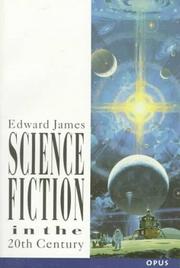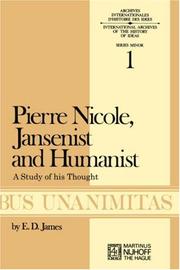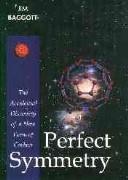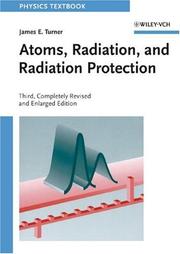| Listing 1 - 10 of 62 | << page >> |
Sort by
|

ISBN: 0192892444 0192192639 9780192892447 Year: 1994 Publisher: Oxford Oxford University Press
Abstract | Keywords | Export | Availability | Bookmark
 Loading...
Loading...Choose an application
- Reference Manager
- EndNote
- RefWorks (Direct export to RefWorks)
Fiction --- Literature --- anno 1900-1999 --- Science fiction --- Science-fiction --- History and criticism. --- Histoire et critique --- 82-311.9 --- 82-311.9 Science fiction --- 20e siècle
Article
Abstract | Keywords | Export | Availability | Bookmark
 Loading...
Loading...Choose an application
- Reference Manager
- EndNote
- RefWorks (Direct export to RefWorks)

ISBN: 9024712823 9401027846 9789024712823 Year: 1972 Volume: 1 Publisher: The Hague: Nijhoff,
Abstract | Keywords | Export | Availability | Bookmark
 Loading...
Loading...Choose an application
- Reference Manager
- EndNote
- RefWorks (Direct export to RefWorks)
History of civilization --- Christian church history --- Nicole, Pierre --- Humanists --- Jansenists --- History --- Nicole, Pierre, --- France --- Intellectual life --- 273.72 --- -Jansenists --- -#GOSA:II.P.AU.4 --- Christian sects --- Scholars --- Jansenistische auteurs:--teksten en studies over (naam zoals in namenfile) --- -Nicole, Pierre --- 273.72 Jansenistische auteurs:--teksten en studies over (naam zoals in namenfile) --- #GOSA:II.P.AU.4 --- Damvilliers, --- Irenaeus, Paulus --- Wendrock, Guillaume --- Profuturus, Franciscus --- Wendrockius, Willelmus --- Jansenists - France - History - 17th century --- Nicole, Pierre, - 1625-1695 --- France - Intellectual life - 17th century
Book
ISBN: 0716750228 9780716750222 Year: 1988 Volume: 23 Publisher: New York, N.Y.: Scientific American Library,
Abstract | Keywords | Export | Availability | Bookmark
 Loading...
Loading...Choose an application
- Reference Manager
- EndNote
- RefWorks (Direct export to RefWorks)
materiaalkennis --- Structural parts and elements of building --- sterkteleer --- Materials sciences --- constructies --- belastingen (technologie) --- Strength of materials --- Structural analysis (Engineering) --- 620.1 --- Architectural engineering --- Engineering, Architectural --- Structural mechanics --- Structures, Theory of --- Structural engineering --- Materials, Strength of --- Resistance of materials --- Building materials --- Flexure --- Mechanics --- Testing --- Elasticity --- Graphic statics --- Strains and stresses --- Materials testing. Defects of materials. Protection of materials --- 620.1 Materials testing. Defects of materials. Protection of materials --- Structural analysis (engineering)

ISBN: 0300053835 0300059914 Year: 1993 Publisher: New Haven, CT ; London : Yale University Press,
Abstract | Keywords | Export | Availability | Bookmark
 Loading...
Loading...Choose an application
- Reference Manager
- EndNote
- RefWorks (Direct export to RefWorks)
Art [Public ] --- Art public --- Holocaust [Jewish ] (1939-1945), in art --- Holocaust [Joodse ] (1939-1945), in de kunst --- Holocaust juif (1939-1945), dans l'art --- Kunst [Openbare ] --- Openbare kunst --- Public art --- Holocaust memorials --- Holocaust, Jewish (1939-1945), in art --- Art, Modern --- Holocaust, Jewish (1939-1945) --- Monuments aux victimes de l'Holocauste --- Holocauste, 1939-1945 dans l'art --- Art --- Holocauste, 1939-1945 --- Museums --- Musées --- -Holocaust memorials --- -Holocaust, Jewish (1939-1945), in art --- -Public art --- -Holocaust, Jewish (1939-1945) --- Memorials --- Catastrophe, Jewish (1939-1945) --- Destruction of the Jews (1939-1945) --- Extermination, Jewish (1939-1945) --- Holocaust, Nazi --- Ḥurban (1939-1945) --- Ḥurbn (1939-1945) --- Jewish Catastrophe (1939-1945) --- Jewish Holocaust (1939-1945) --- Jews --- Nazi Holocaust --- Nazi persecution of Jews --- Shoʾah (1939-1945) --- Genocide --- World War, 1939-1945 --- Kindertransports (Rescue operations) --- Civic art --- Modern art --- Nazi persecution --- Persecutions --- Atrocities --- Jewish resistance --- Holocaust, Jewish (1939-1945), in art. --- Public art. --- Museums. --- -Museums --- Musées --- -Civic art --- Affichistes (Group of artists) --- Fluxus (Group of artists) --- Modernism (Art) --- Schule der Neuen Prächtigkeit (Group of artists) --- Zero (Group of artists) --- Holocaust, Nazi (Jewish Holocaust) --- Nazi Holocaust (Jewish Holocaust) --- Nazi persecution (1939-1945) --- JUIFS --- HOLOCAUSTE JUIF (1939-1945, SHOAH) --- EXTERMINATION (1939-1945) --- HISTORIOGRAPHIE --- MEMOIRE
Book
ISBN: 9780807871850 9780807834633 Year: 2011 Publisher: Chapel Hill University of North Carolina Press
Abstract | Keywords | Export | Availability | Bookmark
 Loading...
Loading...Choose an application
- Reference Manager
- EndNote
- RefWorks (Direct export to RefWorks)
Segregatie in de literatuur --- Segregation in literature --- Ségrégation dans la littérature --- American literature --- Segregation in literature. --- African Americans --- Modernism (Literature) --- African American authors --- History and criticism. --- Segregation. --- Intellectual life --- English literature --- Agrarians (Group of writers) --- Jim Crowism --- Segregation --- African American authors&delete& --- History and criticism --- Social conditions --- 19th century --- 20th century --- United States --- Littérature américaine --- Ségrégation --- Noirs américains --- Auteurs noirs américains --- Histoire et critique --- Dans la littérature --- Vie intellectuelle --- 19e siècle --- 20e siècle --- Littérature américaine --- Ségrégation --- Noirs américains --- Auteurs noirs américains --- Dans la littérature --- 19e siècle --- 20e siècle

ISBN: 0198557892 0198557906 9780198557890 Year: 1996 Publisher: Oxford: Oxford university press,
Abstract | Keywords | Export | Availability | Bookmark
 Loading...
Loading...Choose an application
- Reference Manager
- EndNote
- RefWorks (Direct export to RefWorks)
This book tells the fascinating story of the discovery of buckminsterfullerene, a perfectly symmetrical soccer-ball shaped molecule composed of 60 carbon atoms. This new molecule, one of a large family of carbon cage molecules called "fullerenes"--represents a new form of carbon, complementing such well-known materials as diamond and graphite. Its discovery has revolutionized our understanding of carbon, once the most familiar elements. It has heralded a new chemistry, a new range of high-temperature superconductors and some marvelous new concepts in the architecture of large carbon structures. In this account, prize-winning science writer Jim Baggott tells the compelling story of buckminsterfullerene, from its natural occurrence in the cold chemistry of interstellar clouds to its accidental, stunning creation in a modern chemistry laboratory, and the subsequent development of one of today's fastest-growing scientific fields. By combining a lucid and entertaining style with scientific accuracy, the author has written a book that will appeal to general readers and chemists alike.
Buckminsterfullerene. --- 546.26 --- Buckminsterfullerene --- #WSCH:ETOS --- Buckyball --- Buckyballs --- Fullerenes --- Carbon C --- 546.26 Carbon C --- fysicochemie --- Macromolecules --- BUCKMINSTERFULLERENE --- CHEMISTRY --- SYMMETRY (PHYSICS) --- HISTORY --- 20th CENTURY --- Buckminsterfullerène. --- Fullerènes. --- Carbone. --- Fullerenes. --- Carbon.
Book
ISBN: 9780521728737 9780521429597 0521429595 0521728738 1107484626 1107480396 1139014625 9781139014625 Year: 2012 Publisher: Cambridge Cambridge University Press
Abstract | Keywords | Export | Availability | Bookmark
 Loading...
Loading...Choose an application
- Reference Manager
- EndNote
- RefWorks (Direct export to RefWorks)
Fantasy is a creation of the Enlightenment and the recognition that excitement and wonder can be found in imagining impossible things. From the ghost stories of the Gothic to the zombies and vampires of twenty-first-century popular literature, from Mrs Radcliffe to Ms Rowling, the fantastic has been popular with readers. Since Tolkien and his many imitators, however, it has become a major publishing phenomenon. In this volume, critics and authors of fantasy look at the history of fantasy since the Enlightenment, introduce readers to some of the different codes for the reading and understanding of fantasy and examine some of the many varieties and subgenres of fantasy; from magical realism at the more literary end of the genre, to paranormal romance at the more popular end. The book is edited by the same pair who edited The Cambridge Companion to Science Fiction (winner of a Hugo Award in 2005)
Littérature fantastique anglaise --- Littérature fantastique américaine --- Fantasy literature, English --- Fantasy literature, American --- Fantasy literature --- Histoire et critique --- History and criticism. --- History and criticism --- Theory, etc. --- Appreciation. --- 82-312.9 --- Fantastische literatuur --- Literary criticism --- Phantastische Literatur. --- Englisch. --- Phantastischer Roman. --- European --- English, Irish, Scottish, Welsh. --- English, Irish, Scottish, Welsh --- bisacsh. --- 82-312.9 Fantastische literatuur --- Fantastic literature --- Literature --- Appreciation --- History and criticism&delete& --- Theory, etc --- Histoire et critique. --- Bisacsh. --- Littérature fantastique anglaise --- Littérature fantastique américaine

ISBN: 9783527406067 3527406069 Year: 2007 Publisher: Weinheim: Wiley-VCH,
Abstract | Keywords | Export | Availability | Bookmark
 Loading...
Loading...Choose an application
- Reference Manager
- EndNote
- RefWorks (Direct export to RefWorks)
Atoms, Radiation, and Radiation Protection offers professionals and advanced students a comprehensive coverage of the major concepts that underlie the origins and transport of ionizing radiation in matter. Understanding atomic structure and the physical mechanisms of radiation interactions is the foundation on which much of the current practice of radiological health protection is based. The work covers the detection and measurement of radiation and the statistical interpretation of the data. The procedures that are used to protect man and the environment from the potential harmful effects of radiation are thoroughly described. Basic principles are illustrated with an abundance of worked examples that exemplify practical applications. Chapters include problem sets (with partial answers) and extensive tables and graphs for continued use as a reference work. This completely revised and enlarged third edition includes thorough updates of the material, including the latest recommendations of the ICRP and NCRP.
519.16 --- Algorithmic problems of combinatorial analysis --- Radiation --- Ionizing radiation --- Safety measures --- Nuclear Energy --- Radiation Effects --- Radiation Protection --- Radiometry --- Ionizing radiation. --- Nuclear Energy. --- Radiation Effects. --- Radiation Protection. --- Radiometry. --- Safety measures. --- Radiation monitoring --- Radiation protection --- Radiation, Ionizing --- Radioactivity --- Atoms. --- Chemistry, Physical and theoretical --- Matter --- Stereochemistry --- Constitution --- Monograph --- Radiation - Safety measures
Book
ISBN: 9780198809111 0198809115 Year: 2018 Publisher: Oxford: Oxford university press,
Abstract | Keywords | Export | Availability | Bookmark
 Loading...
Loading...Choose an application
- Reference Manager
- EndNote
- RefWorks (Direct export to RefWorks)
Today we are blessed with two extraordinarily successful theories of physics. The first is Albert Einstein's general theory of relativity, which describes the large-scale behaviour of matter in a curved spacetime. This theory is the basis for the standard model of big bang cosmology. The discovery of gravitational waves at the LIGO observatory in the US (and then Virgo, in Italy) is only the most recent of this theory's many triumphs.The second is quantum mechanics. This theory describes the properties and behaviour of matter and radiation at their smallest scales. It is the basis for the standard model of particle physics, which builds up all the visible constituents of the universe out of collections of quarks, electrons and force-carrying particles such as photons. The discovery of the Higgs boson at CERN in Geneva is only the most recent of this theory's many triumphs.But, while they are both highly successful, these two structures leave a lot of important questions unanswered. They are also based on two different interpretations of space and time, and are therefore fundamentally incompatible. We have two descriptions but, as far as we know, we've only ever had one universe. What we need is a quantum theory of gravity.Approaches to formulating such a theory have primarily followed two paths. One leads to String Theory, which has for long been fashionable, and about which much has been written. But String Theory has become mired in problems. In this book, Jim Baggott describes ": an approach which takes relativity as its starting point, and leads to a structure called Loop Quantum Gravity. Baggott tells the story through the careers and pioneering work of two of the theory's most prominent contributors, Lee Smolin and Carlo Rovelli. Combining clear discussions of both quantum theory and general relativity, this book offers one of the first efforts to explain the new quantum theory of space and time.
Quantum theory. --- Space and time. --- Relativity (Physics) --- Gravité quantique --- Théorie quantique --- Espace et temps --- Relativité (physique) --- Univers --- Universe. --- Gravité quantique. --- Théorie quantique. --- Espace et temps. --- Univers. --- Gravité quantique. --- Théorie quantique. --- Relativité (physique)
| Listing 1 - 10 of 62 | << page >> |
Sort by
|

 Search
Search Feedback
Feedback About UniCat
About UniCat  Help
Help News
News